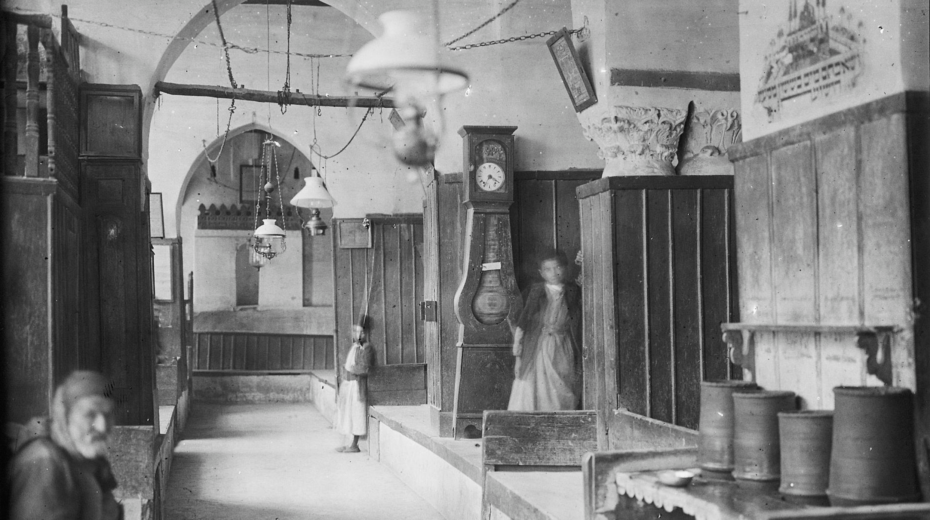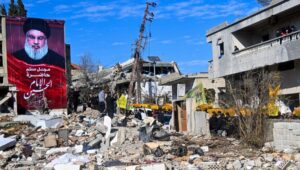In the 20th century, there were about a million Jews living in Arab countries. Today, there are only about 3,000! Mostly residing in Morocco and Tunisia. Contrary to popular belief, modern persecution of Jews in Arab states did not begin with the establishment of the State of Israel, but at the beginning of the 20th century, when Arabs sought independence. Examples include the pogroms in Algeria in 1934 and the Farhud massacre in Iraq in 1941. At that time, Arab leaders did not want Jewish presence in their countries, even though Jews had been living in the Middle East long before Islam and the arrival of the Prophet Muhammad.
- What happened to the million Jews?
- What happened to their private and public property?
Hundreds of synagogues, cemeteries, schools and buildings that once belonged to Jews continue to silently bear witness in Arab countries.
Jewish communities in Arab countries had rich culture, significant heritage and a glorious tradition. Today, Jews from Arab countries and their descendants make up more than 50 percent of Israel’s Jewish population. The circumstances of their immigration and expulsion were varied: while many came to Israel out of Zionist conviction, others had to flee out of fear for their lives.
The report documents the persecution, dispossession and expulsion of around 30,000 Jews from Syria in the 20th century. Syria, which is currently undergoing profound political and social upheaval, marked by civil war and the overthrow of Bashar al-Assad; was once home to one of the oldest Jewish communities in the world – with roots going back over 2,500 years.
According to the report, other ethnic minorities such as Christians, Druze, Kurds could be similarly threatened by the formation and takeover of a new government. These are the key findings of a study by Justice for Jews from Arab Countries (JJAC), an organization representing Jews from the Middle East and North Africa.
“Syria was once home to a thriving Jewish community,” explains Sylvain Abitbol, co-president of JJAC. “Archaeological finds demonstrate the millennia-old presence of Jewish communities in cities such as Damascus and Aleppo, which often had larger Jewish populations than the land of Israel.”
The situation for Jews in Syria deteriorated dramatically starting in the 1930s, when Arab nationalist movements targeted the Jewish community. This period was marked by growing anti-Semitic rhetoric, physical attacks and the formation of Nazi-style youth groups. In the decades following World War II, persecution continued to escalate. Property was systematically confiscated. Freedom of movement was severely restricted. Economic marginalization was promoted, and state-sanctioned harassment was established.
The Jewish population shrank from 29,770 in 1943 to 5,400 in 1958, and finally to fewer than 100 in 1991—the community was virtually wiped out. Many of the displaced Jews found new homes in Israel, the United States, and South America. Today, there are only four known Jews living in Damascus in Syria, while the Syrian Jewish diaspora numbers over 100,000 members worldwide.
“The Jews have disappeared from Syria,” explains Rabbi Dr. Elie Abadie, co-president of JJAC, whose family had to flee Syria. “But now the same fate is looming for Christians. Minorities were defenseless under the previous regimes, and I fear they are also at risk under the new regime.”
JJAC has so far published reports on the displacement of one million Jews from eleven Arab countries and Iran. The aim is to celebrate the cultural heritage and contributions of these communities and to demand their rights. The reports also document the individual and collective losses caused by the displacement.
The Syria report published today was completed in record time given current developments in the country and is available both online and in print.
“When the term ‘refugees’ is used in the context of the Middle East, international attention focuses almost exclusively on the Palestinians,” emphasizes Dr. Stanley Urman, Executive Vice President of JJAC. “But as a result of the Middle East conflict, two major refugee groups have emerged: Arab refugees and Jews from Arab countries.”
Abitbol adds: “For over 75 years, the world has witnessed the mass displacement of more than 850,000 Jews from Arab countries such as Syria, Egypt, Iraq, Yemen and Morocco. These are ignored. The events in Syria are a reminder of the country’s 2,500-year-old Jewish history, especially the significant role of the Jewish communities in Aleppo and Damascus.”
Urman stresses that the call for rights and reparations for Jewish refugees is not intended to diminish the claims of Palestinian refugees. “For lasting peace in the Middle East, truth and justice must apply to all,” Urman said.
Abitbol concludes: “In the spirit of the Abraham Accords and in light of historic progress in relations between Israel and Muslim countries, it is time to recognize the rights of all affected groups and take steps toward reconciliation in the region.”
History of the Jewish community in Syria
Syria was home to one of the oldest Jewish communities in the Middle East, with roots stretching back over 2,500 years. Archaeological evidence shows a continuous Jewish presence in key cities such as Damascus and Aleppo.
The community was known for its significant economic contributions. Jewish merchants played a role in foreign trade, ran major banking networks, and conducted international trade that linked Syria with Baghdad, Persia, and India.
Under Islamic rule, Jews and Christians were classified as dhimmis—a protected but fundamentally subordinate status that systematically marginalized the community. This legal system imposed numerous restrictions on social and economic life, leaving Jews second-class citizens subject to arbitrary treatment and periodic harassment.

Central Synagogue of Aleppo, before 1940. Public Domain.
The 1930s and 1940s were a particularly dangerous period, marked by fascist-inspired nationalist movements, the emergence of Nazi-like youth groups, increasing physical attacks, and growing anti-Semitic rhetoric.
The post-World War II period was marked by aggressive persecution, including widespread expropriations, severe restrictions on movement, systematic economic marginalization, violent incidents, and state-sanctioned harassment. Due to constant state-sponsored persecution and discriminatory policies, the Jewish population shrank dramatically: from about 50,000 in the early 20th century to 30,000 in 1948, about 5,000 in 1958, and fewer than 100 in 1991.
By 1991, the Jewish community in Syria was effectively wiped out. Again, today, it is estimated that only four Jews remain in Syria.
Economic Analysis of Jews in Syria
One goal of this project is to provide a detailed and comprehensive assessment of the individual and communal property left behind by Jews expelled from Arab countries.
JJAC gathered the best available evidence on the extent of Jewish assets lost. This process included a thorough review of available documentation, interviews with community leaders and subject matter experts, the collection of witness statements, an analysis of the role of each Jewish community in its respective country, and a consideration of previous assessment attempts.
The goal of this project was to account for the totality of financial losses suffered by Syrian Jews, including their rural and urban assets, income losses, movable assets and personal property, business losses, and community losses.
Total estimate of losses (1947):
- Rural assets: $129,407
- Urban assets: $109,453,450
- Income losses: $3,062,153
- Movable assets & personal property: $25,695,950
- Business losses: $53,209,388
- Community losses: $8,617,110
- Total: $200,167,458
Using a detailed, multi-step methodology, including inflation, interest rates, and currency conversion, the losses suffered by the Jews were extrapolated to today’s value.
The total value of all assets as of December 31, 2024 was equivalent to over ten billion dollars ($10,692,545,656 USD).














